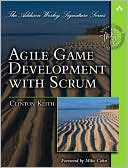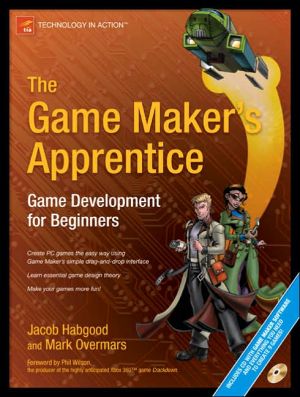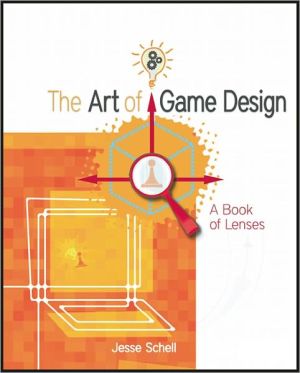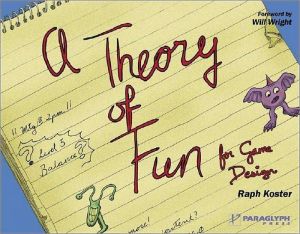Agile Game Development with Scrum
Search in google:
Deliver Better Games Faster, On Budget—And Make Game Development Fun Again!Game development is in crisis—facing bloated budgets, impossible schedules, unmanageable complexity, and death march overtime. It’s no wonder so many development studios are struggling to survive. Fortunately, there is a solution. Scrum and Agile methods are already revolutionizing development outside the game industry. Now, long-time game developer Clinton Keith shows exactly how to successfully apply these methods to the unique challenges of game development.Keith has spent more than fifteen years developing games, seven of them with Scrum and agile methods. Drawing on this unparalleled expertise, he shows how teams can use Scrum to deliver games more efficiently, rapidly, and cost-effectively; craft games that offer more entertainment value; and make life more fulfilling for development teams at the same time.You’ll learn to form successful agile teams that incorporate programmers, producers, artists, testers, and designers—and promote effective collaboration within and beyond those teams, throughout the entire process. From long-range planning to progress tracking and continuous integration, Keith offers dozens of tips, tricks, and solutions—all based firmly in reality and hard-won experience.Coverage includesUnderstanding Scrum’s goals, roles, and practices in the context of game developmentCommunicating and planning your game’s vision, features, and progress Using iterative techniques to put your game into a playable state every two to four weeks— even dailyHelping all team participants succeed in their rolesRestoring stability and predictability to the development processManaging ambiguous requirements in a fluid marketplaceScaling Scrum to large, geographically distributed development teams Getting started: overcoming inertia and integrating Scrum into your studio’s current processesIncreasingly, game developers and managers are recognizing that things can’t go on the way they have in the past. Game development organizations need a far better way to work. Agile Game Development with Scrum gives them that—and brings the profitability, creativity, and fun back to game development.
Foreword xviiPreface xixAcknowledgments xxiiiAbout the Author xxvPart I: The Problem and the Solution 1Chapter 1: The Crisis Facing Game Development 3A Brief History of Game Development 4The Crisis 10A Silver Lining 11Additional Reading 12Chapter 2: Agile Development 13Why Projects Are Hard 14Why Use Agile for Game Development? 20What an Agile Project Looks Like 28The Challenge of Agile 32Additional Reading 32Part II: Scrum and Agile Planning 33Chapter 3: Scrum 35The History of Scrum 36Scrum Parts 41Scrum Roles 44Customers and Stakeholders 54Chickens and Pigs 55Scaling Scrum 56Summary 56Additional Reading 57Chapter 4: Sprints 59The Big Picture 59Planning 59Tracking Progress 68The Daily Scrum Meeting 74Sprint Reviews 75Retrospectives 78Summary 84Additional Reading 84Chapter 5: User Stories 85A Fateful Meeting 85What Are User Stories? 87Levels of Detail 88Conditions of Satisfaction 90Using Index Cards for User Stories 92INVEST in User Stories 92User Roles 97Defining Done 99Collecting Stories 100Advantages of User Stories 103Summary 105Additional Reading 105Chapter 6: Agile Planning 107Why Agile Planning? 107The Product Backlog 108Estimating Story Size 112Release Planning 117Summary 124Additional Reading 124Part III: Agile Game Development 125Chapter 7: Video Game Project Planning 127Midnight Club Story 127Minimum Required Feature Sets 128The Need for Stages 130The Development Stages 130Mixing the Stages 132Managing Stages with Releases 132Production on an Agile Project 134Summary 155Additional Reading 155Chapter 8: Teams 157Great Teams 158A Scrum Approach to Teams 159Game Teams and Collaboration 168Scaling and Distributing Scrum 173Summary 188Additional Reading 188Chapter 9: Faster Iterations 189Where Does Iteration Overhead Come From? 190Measuring and Displaying Iteration Time 191Personal and Build Iteration 193Summary 201Additional Reading 201Part IV: Agile Disciplines 203Chapter 10: Agile Technology 205The Problems 205An Agile Approach 210Summary 220Additional Reading 221Chapter 11: Agile Art and Audio 223The Problems We Are Solving with Agile 223Concerns About Agile 225Art Leadership 226Art on a Cross-Discipline Team 227Summary 232Additional Reading 233Chapter 12: Agile Design 235The Problems 236Designing with Scrum 237Summary 247Additional Reading 247Chapter 13: Agile QA and Production 249Agile QA 249The Role of QA on an Agile Game Team 252Agile Production 259Summary 262Additional Reading 263Part V: Getting Started . 265Chapter 14: The Myths and Challenges of Scrum 267Silver Bullet Myths . 267Fear, Uncertainty, and Doubt 269Scrum Challenges 273Summary 281Additional Reading 282Chapter 15: Working with a Publisher 283The Challenges 284Building Trust, Allaying Fear 288Agile Contracts 293Summary 300Additional Reading 300Chapter 16: Launching Scrum 301The Three Stages of Adoption 301Adoption Strategies 317Summary 324Additional Reading 324Conclusion 325Bibliography 327Index 329








